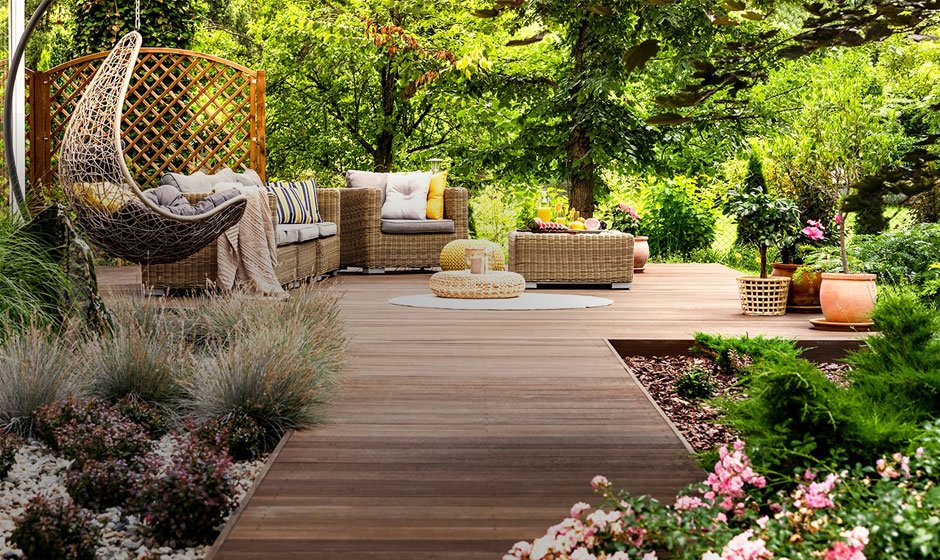Choosing the Right Plants for Your Climate
Choosing plants that thrive in the region’s particular weather conditions is essential for creating a vibrant and successful garden. These plants require less maintenance and water, allowing them to flourish and provide a more vibrant garden.
Different climate zones support different plant varieties. Knowing your hardiness zone can save you time and effort in your gardening endeavors. For instance, succulents and cacti are excellent choices for arid climates due to their ability to store water. At the same time, ferns and hostas thrive in more temperate areas where moisture is more readily available. These specific plant choices will survive and flourish, giving your garden a consistently beautiful look over time. Online resources like the National Gardening Association can help identify the ideal plants for your specific climate. Additionally, involving community gardening groups can offer shared experiences and tips specific to your locale. To start, consult your local landscaping supply store for expert advice on plant selection. Native plants generally adapt to local conditions and offer year-round interest. They often require less water, fertilizer, and maintenance, making them an eco-friendly choice.
Incorporating Natural Elements
Materials like stones and wood in your garden can significantly improve its visual attractiveness. These materials can create paths, borders, and seating areas, increasing your garden’s functionality and charm. Stones can develop durable walkways and serve as decorative elements, while wood can be used for structures like trellises and arbors that offer both beauty and functionality. These materials blend seamlessly into the garden setting, creating a more cohesive and natural environment.
A rock garden, for example, can serve as an eye-catching focal point and provide a home for various succulent and alpine plants that add texture and color. At the same time, wooden parts give a feeling of warmth and can be used in multiple ways, like making raised garden beds or serving as supports sion utunomiya for climbing plants like ivy or roses. Using natural materials, you can design a space in tune with the surrounding environment. This connection enhances visual appeal and contributes to the garden’s ecosystem, encouraging wildlife to visit and flourish. For further inspiration, visit Better Homes & Gardens, which offers various ideas on effectively incorporating these elements.
Creating Relaxing Garden Zones
Designing specific zones within your garden can make it a more enjoyable and functional space. Think about creating areas for dining, reading, or meditation. You can use a combination of hedges, screens, and pathways to define these zones and make each unique. For example, a dining area could be bordered by fragrant herbs and flowers, providing privacy and sensory pleasure. Natural dividers like plant beds or low fences can create intimate areas for specific purposes. Making your fence is probably a fun way to spend your free time, but if you have the budget, ordering a custom fence, whether wrought iron or aluminum fence, if it fits your home or zen, would be the best course to go.
Comfortable seating, garden art, and water features can elevate these zones. For instance, a small pond with a bubbling fountain can add a soothing auditory element to a meditation corner, making it an ideal spot to unwind. The gentle murmur of water fosters relaxation and attracts birds and other wildlife, adding a layer of liveliness to the garden. Similarly, a shaded nook with cozy chairs can provide a perfect reading retreat. Add personal touches such as colorful cushions, hanging lanterns, or wind chimes to make the space uniquely yours. Customizing these zones can turn your garden into a multi-functional oasis where you can entertain guests, relax, and rejuvenate.
Sustainable Landscaping Practices
Implementing sustainable practices in your garden benefits the environment and adds long-term value to your landscaping efforts. Techniques like rainwater harvesting, composting, and using native plants can reduce your garden’s environmental footprint. Rainwater harvesting can offer a valuable water source in dry periods, decreasing dependence on municipal water supplies and cutting water expenses.
Utilizing kitchen scraps and garden waste for composting can enhance soil quality, boost plant health, and improve protection against pests and diseases. It also decreases landfill waste, making it a mutually beneficial approach for your garden and the environment. Moreover, native plants can enhance biodiversity by providing habitat and food for local wildlife. These sustainable practices make your garden more eco-friendly and often result in lower maintenance costs and more resilient plants. For more detailed sustainable gardening tips, explore resources like Planet Natural.
Maintaining Your Garden Oasis Year-Round
Consistent upkeep is essential for maintaining the appearance of your garden oasis all year round. Seasonal tasks such as pruning, weeding, and mulching should be scheduled to align with specific plant needs and local climate conditions. Pruning in late winter, for example, can encourage healthy new growth in spring and help prevent disease by removing dead or diseased branches.
Mulching in autumn helps to protect the soil during the colder months, retaining moisture and suppressing weeds. Weeding should be done consistently to prevent unwanted plants from competing with garden specimens for nutrients and water. Knowing seasonal care routines will significantly affect your garden’s health and appearance. Staying on top of these tasks ensures a vibrant garden and reduces the likelihood of pest infestations and plant diseases. For comprehensive seasonal gardening advice, refer to Old Farmer’s Almanac guides.





